Tutorial
Dominant Seams – what and where are they
Hello my lovely sew’ist friends. Today I am discussing Dominant Seams – what and where are they.
The order in which garment seams are sewn – or cross over each other – can affect the hang of the garment – it is called Dominant Seams.
When a garment is worn on the body a majority of the seams hang on the vertical axis. By having a vertical seam sewn before some horizontal seams (some but not all) the vertical seams may not hang properly. And this can also happen with horizontal seams – they may not sit flat if the vertical seam is affecting the way they should sit on the body.
The last seams sewn controls how the garment hangs on the body.
There is always a logical way to sew up a garment and altering or mixing up the sewing order will change how the garment behaves.
Armholes Seams.
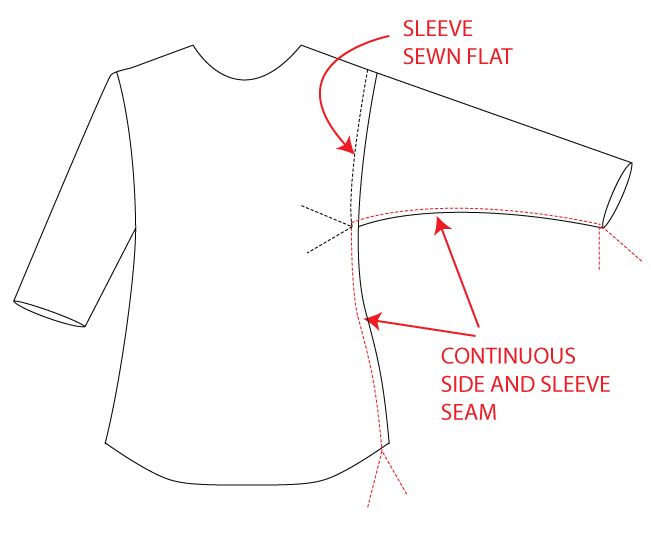
Stitching the sleeve into a flat armhole and then stitching the side seam/sleeve seam in its entirety – one continual pass – will result in the side seam being dominate. When the arm is raised the side seam will lift up.
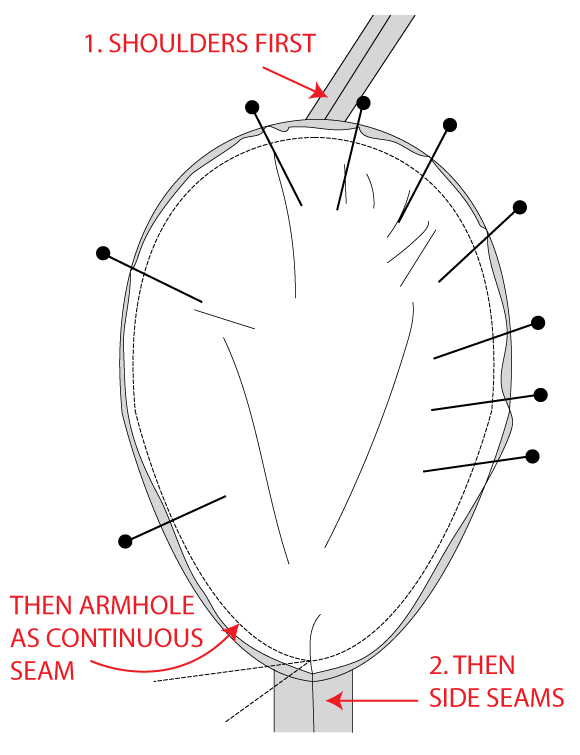
Above is an image from my sewing instructions for my Chelsea Cardigan. The base fabric for construction is jersey knit. I like to stitch my sleeves in “the round” – stitching the sleeve into a closed side seam acts like a rotating hinge on the body. The sleeve seam has the dominance and controls the entire circular motion of the arm when moving in the garment.
Pants Seams.

In the RTW manufacturing environment the crotch seams may be sewn first, and then the inside leg seams sewn in one pass. This has largely been influenced by the jeans industry where the inside leg seam is sewn as a flat felled one with visual heavy top-stitching. Jeans were originally developed as a work wear item – manual labour – garments that had to stand the rigors – so sturdy inner leg seams were needed. Alot of friction is in play on these seams.
Having the inner legs seams sewn last allows for a wider range of motion as the legs tend to “open” more. But it can tend to push the front crotch seam out and away from the body creating a “pointed” or “extension” in the front mound.
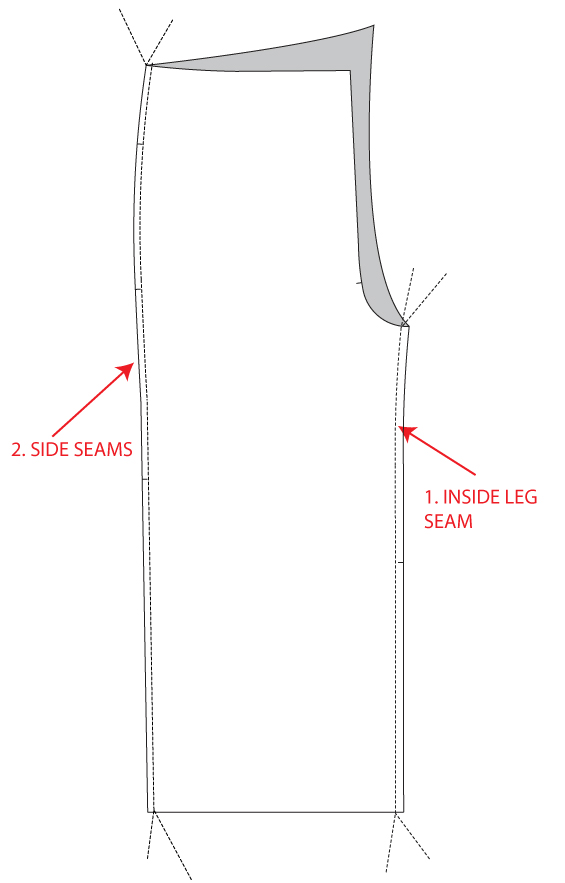
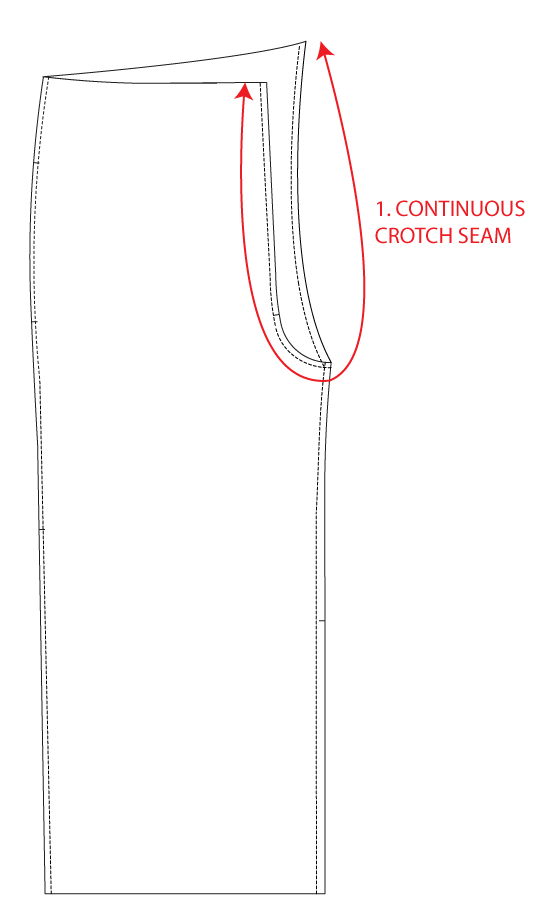
These are a generic type image that I use for my pants sewing instructions. They change depending on what pattern I am writing about but you will see by the above image that my legs are sewn and then the crotch is sewn as one continual pass. This allows for the vertical hang of my legs and also gives each leg it own independent “hinge”.
In-seams sewn last – the pant legs will naturally want to hang apart.
Crotch seams sewn last – the two legs will hang more vertically and stay closer together.
Bodice Seams.
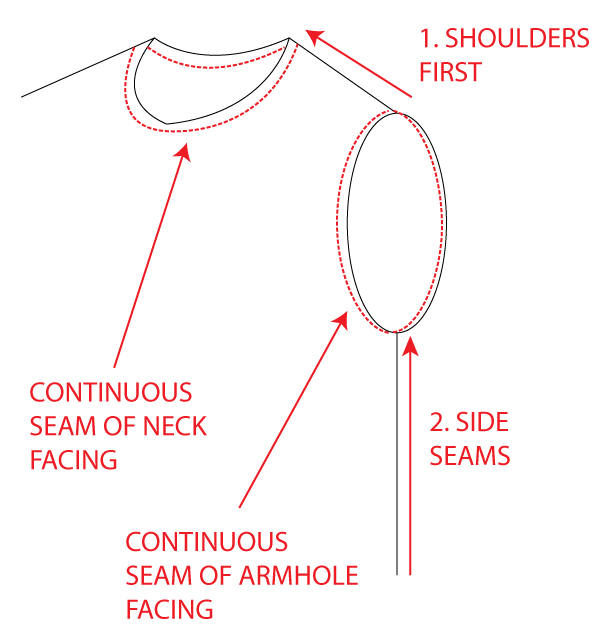
Above is a generic image of the order of sewing a generic bodice. Shoulders, side seams and then the facings.
The facings sitting on top of the body seams again control the hinge movement of the garment. The facing seams are the dominant seams as they flatten and keep the shoulder and side seams flat.
If you were to finish the necklines and armholes as separate entities and then sew shoulders and side seams they would become the dominant seam and wouldn’t sit flat – they would sit away from the body.
A dominant seam is usually the last to be sewn so it is important you visualize the order of your make. A dominant seam is usually in play where there is an intersection of seams.
I hope that you have enjoyed reading this post about dominant seams and that you can add this to your sewing repertoire.
Love to you all. xx
Cheerio
Ann at Designer Stitch.

Ann,
Thank you for the tutorial. As a longtime sewist learning in the 60’s and 70’s I learned the order in which to sew the seams but no one ever said anything about the why. It makes perfect sense. Thanks again!
I really appreciate this post, so helpful even though I am quite an experienced sewer. It is so good I want to bookmark it. Thank you very much, Chrissie D
Thank you. I am a beginner and only sew off patterns. It really helps to understand the reasoning behind the instructions.
This is a good “little known fact” that serves in improving garment construction. Not only the “how” but the “why” is equally important. Thank you for sharing.